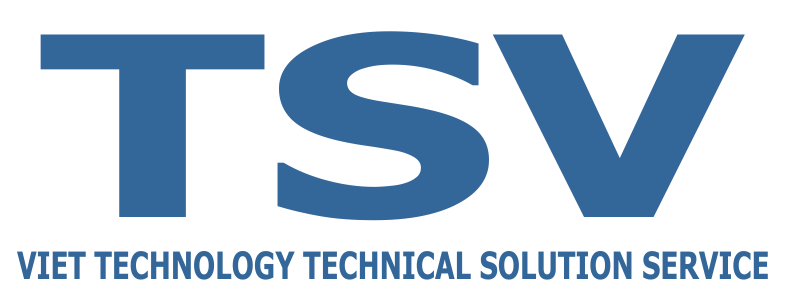Surely sometimes we hear mention of HMI but specifically how the device functions and how it is structured is very vague, isn’t it? Those are the necessary knowledge for you to apply HMI in production. If you are interested, don’t miss this article!
What is HMI?
Do you know? The strong development of science and technology in the 4.0 period has made the appearance from production to life change in a more dynamic, flexible and efficient direction. In those automation devices , let’s not forget to mention HMI.
HMI stands for a full phrase Human – Machine – Interface. It is a device used to communicate between people and machines, equipment, and working systems. Or you can understand more simply that is how humans can communicate, control machines through a screen. And the application of this device is very necessary in today’s industry.
Basic concepts and terms of HMI
HMI is similar to many automation devices, there are terms that customers and users need to pay attention to and grasp.
Screen (Screen)
The screen is where contextual programs or scripts are stored, tag variables and objects.
The display is an integral part of the HMI application software. It is built on top of the HMI development software that is then downloaded to the device to run.
\\\\\\\\\\\\\\\\\\\\\\\\\\\\\\Tags (Variables)
The main tags are the objects that act as an intermediary between the PLC and the HMI. It includes process variables in devices on the control network such as: in intelligent measuring devices, in PLCs, in controller embedded devices, etc. It also includes internal variables inside the operating system. HMI. The purpose is to make intermediate variables for the calculation process.
Variable type
You can refer to some variable types as data type and tag type such as:
Bytes: 0 255
Bit: 0/1 (true/false)
Interger (Original): -32512 +32512
Word: 2 bytes = 0 65025
String: abc
Long, Float, BCD.
Script program
There are 2 different programs for customers to choose from:
+ Program Script object: A program that affects only one object. It is the program code written specifically for the events of the object during work. Example: Button click event, button.
+ Global Script program: It is the program code that has the ability to affect the entire system of the HMI.
Trend
Trend is a graph that represents the change of a tag, also known as a variable, over time. There are two types of trends used: Past Trends and Current Trends.
Alarm
Alerts are objects to give notifications when the system has problems or give alarms to users.
Bar Graph
It has the form of a bar, used to show the continuous change of the indicators: temperature, pressure, humidity, water level.
Structure and functions of HMI
An HMI will have 3 main parts which are:
Hardware
Hardware of HMI will include electronic devices, frame, screen, body… Specifically, the functions of each part are as follows:
+ Keys to manipulate.
Program memory: ROM, RAM, EPROM/FLASH.
+ Screen: Depending on the model, the size of the screen will be large or small. Touch screen for operators to use their hands to control operations. Don’t worry that it’s too complicated, in fact it’s like how we use a smart phone. This screen also helps to display some operating signals of the machine, status. It depends on the program written by the programmer.
+ Chip: It is the CPU of the screen.
Software
HMI’s software consists of 5 parts:
+ Simulation tools
+ Commands and functions
+ Software development
+ Connection tools, debugging tools, program loading tools
+ Some HMI building tools.
The media
HMI communications include:
+ Communication port: Ethernet, RS232, USB, RS485…
+ Communication protocols: CANbus, Modbus, PPI, PROFIBUS, MPI…
Working principle of HMI
HMI is modern automation equipment. Its working principle is not too complicated. You can understand it as an operator interface, in the middle, between machines and people.
The HMI will be connected to other devices via a signal cable. When the operator technician presses the buttons or touches the touch screen on the screen or sets the machine parameters. These requests will be sent to the PLC. PLC receives signals and conducts control of machines, systems, and operation lines.
Not only that, during operation, machines or lines can send back signals including parameters and operating status to display on the HMI screen. From there, through HMI and PLC, people can monitor and control conveniently. Compared to before, HMI brings users more convenience, ensuring more productive, efficient and less strenuous work.
HMI . classification
Although there are many ways to classify HMIs, we choose the simplest way which is to divide them into 2 categories:
Traditional HMI
Traditional HMIs are early HMIs whose design will include:
+ Information input devices: Hard buttons, keyboards, switches.
+ Information output devices: Paper-based self-recorders, multi-colored indicator lights, buzzers or bells, and meters.
Of course, traditional HMIs will have certain disadvantages that force people to invent and improve modern HMIs such as:
+ The information provided is incomplete and inaccurate, greatly affecting the control and operation of the system.
The ability to store information is limited.
+ For large and complex systems, traditional HMIs will be difficult to scale and not meet complex requirements.
+ Stability as well as reliability when working is low.
Modern HMI
Protocols that support signaling back and forth or support print communications.
+ Number of screen keys: On the current HMI, there are 2 types of keys, which are press keys and touch keys, they support expanding operation operations.
Where is HMI used?
As we said at the beginning, HMI has very rich applicability not only in the industrial field but also in daily life activities. When the whole world enters the industrial 4.0 era, HMI becomes an indispensable device to contribute to promoting and restructuring lines and systems so that the process and process are efficient, accurate and reliable. more productive.
In industry
The HMI is a computer screen for technicians to observe and make quick and appropriate controls and adjustments. Even though they are far away, maintenance staff can still monitor the machines through the HMI. They can update the information: data processing, temperature, material, pressure, humidity … HMI will help simplify the physical elements that we often find quite troublesome such as: Buttons, levers, switches, rheostats…especially when starting to form and develop a complex machine system. With a graphical user interface, it displays a complete and fairly detailed display of information and parameters.
In addition, HMI is also used to display the level and status of liquids, solids, chemicals in silos, tanks, tanks, transmit and update information for operating technicians. Modern HMIs can simultaneously monitor and control many machines and equipment in the production system.
HMIs are widely used in automobile manufacturing and assembly plants, textiles, electronics assembly, cement production, chemical or refining products, petrochemicals, mechanical engineering, drug manufacturing and equipment manufacturing. medically…
In reality everyday life
HMI is used on washing machines, dryers, refrigerators, and freezers through colorful push buttons and LED lights so that users can install and adjust the mode to suit their needs.
For ovens, microwave ovens, microwave ovens, through HMI users can adjust the time and temperature.
HMI also appears more familiar when it is a touch screen: TV, smartphone, smart watch, tablet …
Process of building HMI . system
To build a HMI system, we must follow a 2-step process:
Hardware selection
To be able to choose the right hardware, it must be based on 4 factors:
+ Select the number of touch keys, the maximum number of hard keys that can be used at the same time.
+ Select screen size: An HMI screen is selected when there is a need for appropriate graphs, graphics, quantity of sensor information, sensor parameters displayed at the same time.
+ Select memory capacity: Based on the number of screen pages to display, parameters to collect data, data storage parameters.
+ Select the necessary expansion ports when you want: Read barcodes, print or connect peripherals.
Build interface
+ First of all, you have to pay attention to the hardware: Choose the protocol standard and choose the appropriate hardware
+ Proceed to build the screen
+ Assign tags (signboards) to each object
+ Next is to write programs
+ Then simulate and perform program debugging
+ Finally, after completing the above steps, load the device into the HMI





